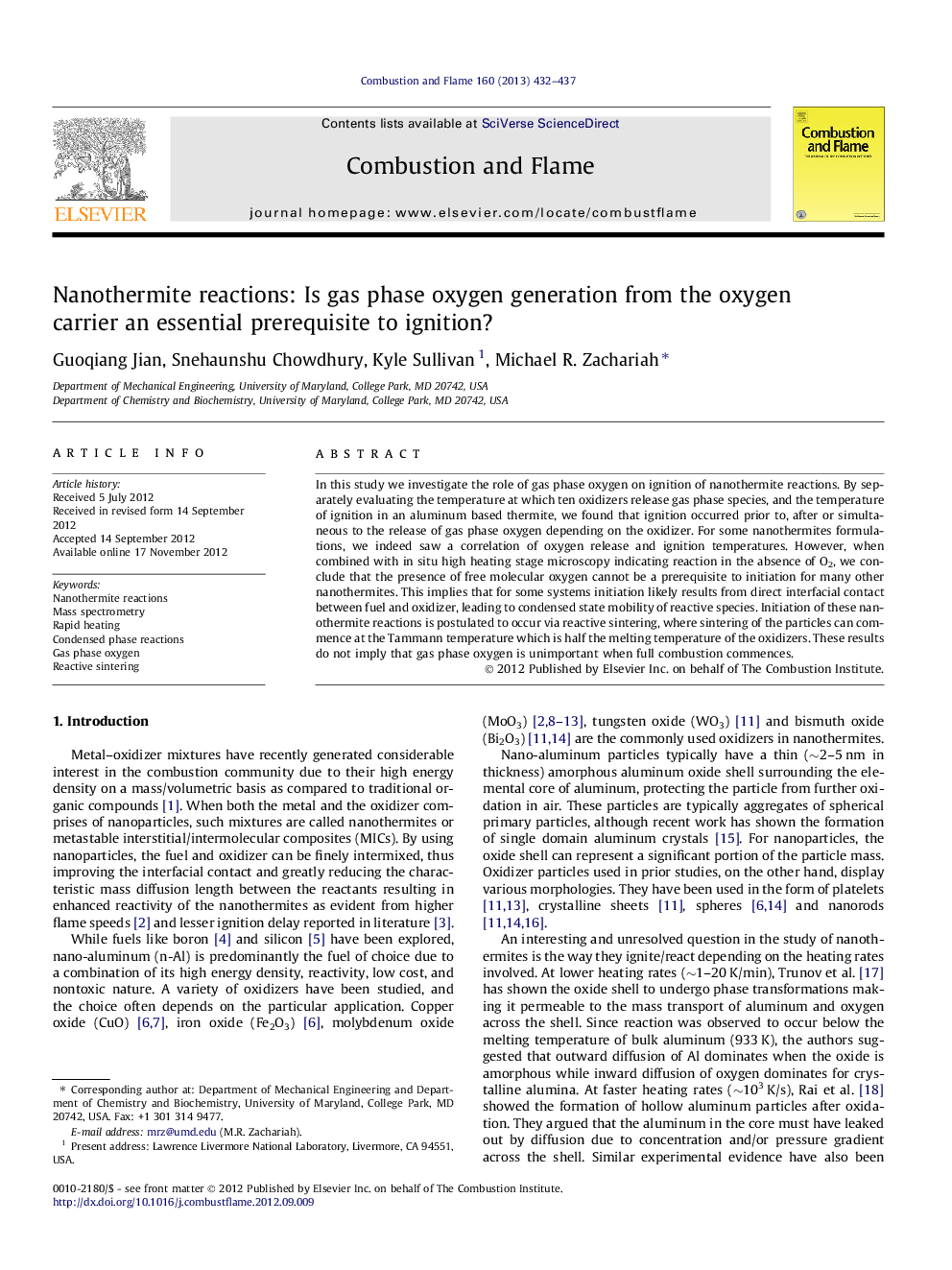| Article ID | Journal | Published Year | Pages | File Type |
|---|---|---|---|---|
| 10264739 | Combustion and Flame | 2013 | 6 Pages |
Abstract
In this study we investigate the role of gas phase oxygen on ignition of nanothermite reactions. By separately evaluating the temperature at which ten oxidizers release gas phase species, and the temperature of ignition in an aluminum based thermite, we found that ignition occurred prior to, after or simultaneous to the release of gas phase oxygen depending on the oxidizer. For some nanothermites formulations, we indeed saw a correlation of oxygen release and ignition temperatures. However, when combined with in situ high heating stage microscopy indicating reaction in the absence of O2, we conclude that the presence of free molecular oxygen cannot be a prerequisite to initiation for many other nanothermites. This implies that for some systems initiation likely results from direct interfacial contact between fuel and oxidizer, leading to condensed state mobility of reactive species. Initiation of these nanothermite reactions is postulated to occur via reactive sintering, where sintering of the particles can commence at the Tammann temperature which is half the melting temperature of the oxidizers. These results do not imply that gas phase oxygen is unimportant when full combustion commences.
Related Topics
Physical Sciences and Engineering
Chemical Engineering
Chemical Engineering (General)
Authors
Guoqiang Jian, Snehaunshu Chowdhury, Kyle Sullivan, Michael R. Zachariah,
